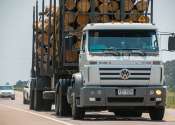Cellular networks vulnerable to wildfires across U.S.
About one in four people in the United States lives in an area served by cellular phone towers at risk of an outage caused by wildfires, according to researchers at the University of Wisconsin–Madison.
Oct 28, 2020
0
18









